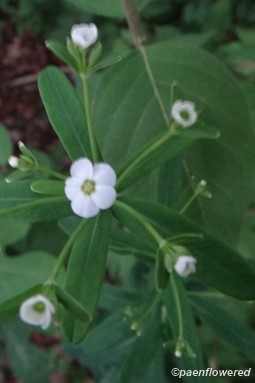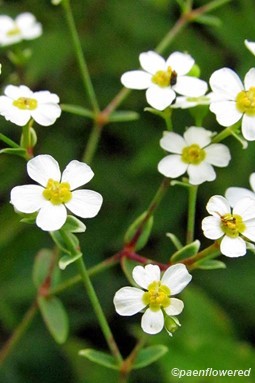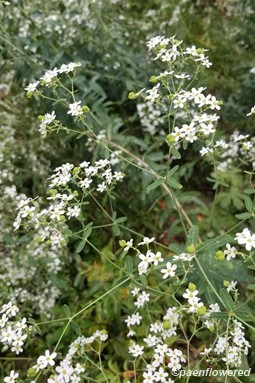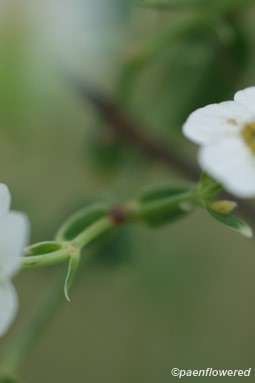Euphorbia corollata
Native perennial with modified white bracts that deceivingly look like flower petals
Euphorbia corollata flowering spurge
This native, perennial, herbaceous member of the spurge family has traits typical of members of that group. The plant may look like it has small flowers with 5 white petals. There are, however, no petals or sepals. What appear to be 5 round white "petals" are actually modified bracts that surround a "cup" containing minute flowers in the center. The bases of the bracts are often green. The technical name for such a flower is a cyathium.
There are separate male and female cyathiums for the flowering spurge. Female flowers have a single ovary with three styles. The ovary protrudes some distance above the base of the cyanthium. The male cyanthium has a number of male flowers with several stamens. Each cyathium is about ¼ inch wide, including the bracts. Five to six flowering branches at the top of the stem create a flat cluster. There is no floral scent. The fruit is a small, 3-seeded capsule.
The flowering spurge also has milky sap, another trait of all spurges. This sap is irritating enough to burn the skin and cause blisters. The leaves are bright green, elongated ovals and are smooth and alternate on the stem. The exception to this pattern is the group of leaves that appear in a whorl beneath the flower stalks. The leaves are about 1.5 inches long. The stem is often spotted.
This plant is commonly found in dry, open fields, prairies, along roads and in open woods, and tolerates poor quality soils. It occurs from Minnesota to New England and Southern Ontario and south and has been documented in almost every county in Western Pennsylvania. The plant can grow 1-3 feet tall, but sometimes leans over due to the weight of the flowers. It has a deep root that often becomes woody with age. They bloom form June to October. The name spurge comes from "to purge", reflecting its former use by Native Americans and colonists as a laxative. Large doses, however, can be poisonous.
Habitat & Range
Occasional in dry, open woods, shale barrens, fields, and sandy waste grounds.
Present throughout the state, except for the northernmost counties.
Wetland code: Not classified
Phenology
Flowers July to September.
Plant Codes
S-rank: No rank
G-rank: G5 (Secure)















Comments
Have you spotted this plant in your area? We'd love to hear about your experience! Share your comments or questions about the plant below. Comments are moderated before posting.